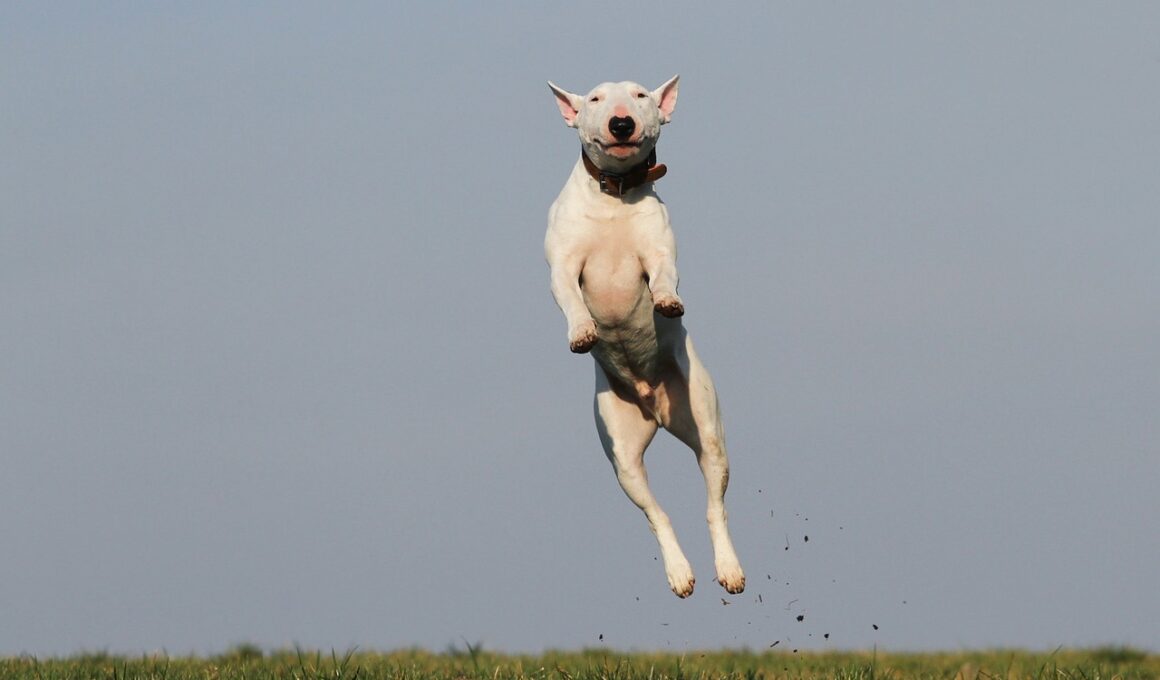How to Clean Up Accidents When Training Pads Are Misused
Training pads are great tools for dog owners but can lead to challenges when misused. Often, accidents occur due to improper placement or the dog’s reluctance to use the pads. If your furry friend misses the pad, don’t panic. Start by gathering essential cleaning supplies such as paper towels, an enzymatic cleaner, and gloves. First, remove any solid waste using the paper towels—this helps keep your environment clean. Ensure to dispose of waste properly by sealing it in a plastic bag. Next, it’s time to treat the stained area. Using an enzymatic cleaner, spray the affected surface generously. These cleaners break down waste proteins and eliminate odors more effectively than standard cleaners. Ensure to follow the instructions on the cleaner’s label for optimal results. After spraying, allow it to sit for the recommended time, letting the enzymes work their magic. Remember, patience is key during this process. You want to make sure every trace of the accident is properly cleaned up so your pup won’t be tempted to revisit that spot. Once done, you can allow the area to air dry for a fresh and clean scent.
Next, you should analyze why the training pad was misused. Understanding your dog’s behavior is crucial in preventing future accidents. Sometimes, pups simply need encouragement to use the training pads. Consider repositioning the pad to a more appealing location or ensuring it is always accessible. You may also want to observe your dog’s habits closely. Does he sniff and circle before relieving himself? If so, this is a good time to guide him to the pad. Make it a positive experience by rewarding him with treats or praises when he uses the pad correctly. Repetition is essential for reinforcing this behavior. You could also try using a command word consistently, such as “go potty,” to signify the pad use. Combining encouragement with good timing will help your dog associate the pad with bathroom breaks effectively. Training pads are not meant to replace outdoor walks, but they can be practical for indoor use. Ensure to also monitor your dog’s water intake and bathroom habits to effectively manage pad training. With a little effort, you can transform training pads into a reliable solution for your dog’s needs.
Cleaning Solutions for Different Surface Types
When cleaning up after your dog, it’s essential to consider the surfaces involved. Different types of surfaces require specific cleaning methods to remove stains and odors effectively. For carpeted areas, blotting the stain with a paper towel is crucial. Avoid rubbing, as this can spread the mess further into the fibers. After blotting, apply an appropriate carpet cleaner according to the manufacturer’s guidelines. For hardwood or laminate floors, start by cleaning up the solid waste carefully. Then, use a mop or cloth with a cleaner safe for that surface type and ensure to follow cleaning product recommendations. On tile or linoleum, the same method works—remove waste and apply a safe cleaner, allowing surfaces to dry thoroughly afterward. Remember, harsh chemicals can leave behind residues harmful to pets, so opt for pet-safe products. If dealing with stubborn odors, consider using baking soda. Sprinkle some on the area after cleaning, let it sit for a while, and vacuum it up. This will absorb lingering smells, giving your home a fresher environment. Each surface has its nuances, so remain informed to ensure the best cleaning practices.
Post-cleaning, invest time in preventing future accidents by maintaining consistent bathroom routines for your dog. Regular potty breaks will help him understand expectations around bathroom usage. During training, take your pup out frequently, allowing him to get comfortable with the concept of using designated areas. Watch for signals that suggest he may want to relieve himself; some dogs circle or whine when they feel the urge. Consistency is paramount; maintain a similar schedule so your dog learns when to expect bathroom breaks. Following playtime or after eating typically presents great opportunities to guide your dog toward appropriate spaces. Incorporate positive reinforcement, rewarding him for any successful bathroom trips to training pads. It also aids in building a positive association with the pads. Gradually, your dog will connect using the pads with good outcomes, leading to a confident pup. Additionally, consider using a second pad in tandem with existing ones in separate areas of your home. This tactic can support your dog’s comfort level and prevent accidents associated with fright or confusion. With time and patience, achieving a clean home while training your pooch is entirely possible.
Dealing With Accidents Strategically
If accidents occur, approach the situation strategically to minimize stress. Reacting harshly can create anxiety for your dog, making future pad usage more troublesome. Instead, focus on cleaning the mess and reestablishing a positive experience. After cleaning, calmly redirect your dog back to the training pad area. Consistently reward good behavior when he successfully uses the pads, reinforcing positive outcomes. If your dog has repeated accidents, reassess both the training pad’s location and your cleaning protocol. Perhaps he finds the pad’s scent unappealing or is unsure of its purpose. Experiment with different designs or brands of training pads until you find one that meets your dog’s preferences. Perhaps varieties infused with attractants such as pheromones or scents better entice your furry friend. Additionally, as puppies grow, they may require fewer reminders, and adjusting your cleaning duty frequency can reflect their needs over time. As with any training method, continued learning is essential; evaluate your plan regularly and make necessary changes. With dedication and awareness, you will find the approach that works best for both you and your dog.
Sometimes, dog training can require more than just cleaning pads and managing routines. If your dog persistently struggles to use the pads, consult a veterinarian or a professional dog trainer. They may help identify underlying behavioral issues or anxiety influencing your dog’s habits. A specialist can suggest targeted training exercises or provide insights based on their professional experiences, refining your current methods. By aligning with professionals, you can enhance your knowledge about dog behavior, ensuring you address any needs your furry friend may have. Regular health check-ups are equally important; certain medical conditions might affect your dog’s ability to control his bladder. Regular veterinary visits help ensure that you remain updated on your dog’s health, allowing for proactive measures along the way. Remember, a robust support network among other dog owners and communities can inspire you during training. Engage in discussions that promote shared experiences and solutions, offering helpful tips and moral support as you navigate training challenges. Your commitment to learning and adapting ultimately fosters a positive atmosphere for your dog. Celebrate the small victories during training, as each success encourages further growth in your dog’s behavior.
Conclusion and Future Training
As you journey through training your dog to effectively utilize training pads, remember that flexibility and patience are key. There will be setbacks, but these experiences often provide valuable lessons for both you and your canine companion. Celebrate the progress, no matter how small it may seem, as it plays a crucial role in building confidence. Continue refining your strategies, adjusting based on feedback from your dog’s responses. Moreover, be prepared to adapt your plan as your dog matures, as needs may shift with age. Regular practice will truly help transform pad usage into a second nature behavior for your furry friend. Communicate your expectations clearly, consistently, and kindly, which fosters a trusting bond between you and your pup. Establishing this trust encourages your dog to respond positively during training sessions. Consistently involve family members or housemates in the process so your dog gets used to varied commands from different people. Over time, with dedication and a positive environment, you can encourage your dog’s confidence and comfort in utilizing training pads effectively, leading to a clean and harmonious home.


